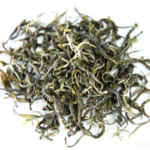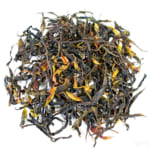- HOME >
- Tea Column
Hidden Costs of High Valuations of Old Tea Trees
- [2023.04.06] Posted By Akira Hojo
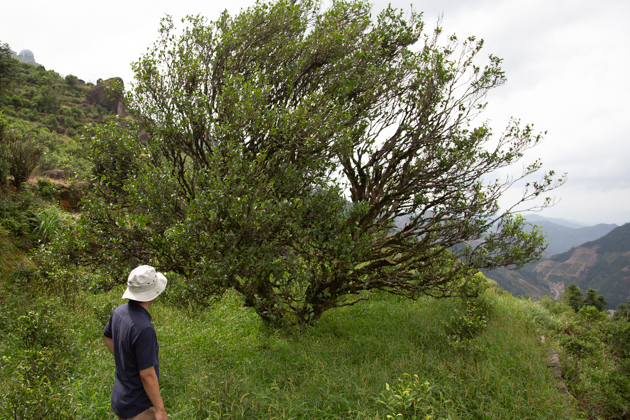
Over the past decade, tea enthusiasts in China have been captivated by teas harvested from Ancient Tea trees, particularly those from Yunnan province, Phoenix Dan Cong Oolong Tea and Wuyi Rock Tea. However, as Ancient Tea trees are rare, the prices of teas harvested from them have skyrocketed. As a result, some farmers who possess Ancient Tea trees tend to overprotect them, which can lead to unintended negative consequences.
Amateur enthusiasts who admire Ancient Tea trees
Factors such as altitude, absence of fertilizers, age of tea trees, and clay soil are crucial in improving tea quality. However, the age of tea trees is often overemphasized. In reality, each factor plays a significant role in tea quality, and it is important not to solely focus on the Ancient Tea trees.
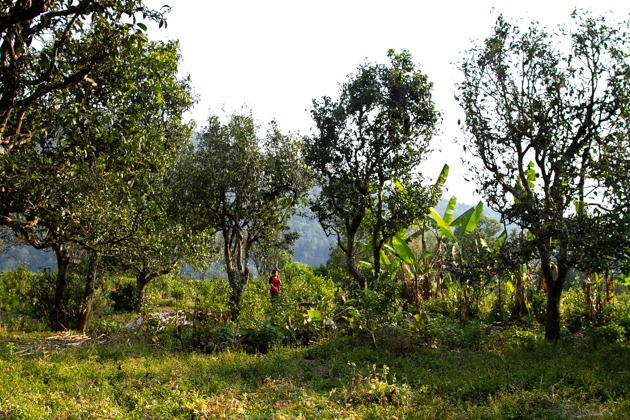
Tea gardens lined with huge tea trees

Nonetheless, Ancient Tea trees possess a visible and remarkable presence, making them alluring to amateur tea enthusiasts. Teas harvested from Ancient Tea trees have a rich aftertaste, strong aroma, depth, and a lingering sweetness known as “Hui Gan” in Chinese, making them highly valued for their quality.
Why Tea from Old Trees in Remote Areas is Becoming More Expensive
In remote villages in Yunnan province, it’s common to find old tea trees. However, these trees are typically not sold at high prices in these villages. But when infrastructure like highways and airports are built near the village, tourists looking to purchase tea start to visit. Since tourists often don’t know the market price, they may overpay for the tea. If word gets out that tea from that village sells for a high price, the market value can suddenly rise. This often results in a sharp increase in prices in just a few years. In recent years, it’s not uncommon for tea from old trees to sell for several times the price of other teas.
Since tea farmers only have a limited number of trees, increasing the yield from a single old tree can increase their income. Moreover, for highly-priced old trees, farmers may want to increase the yield even more. Therefore, in villages where prices are rising, there’s often an increase in the use of fertilizers. This can cause the trees to grow faster, resulting in a higher yield and more income for the farmers.
How Fertilizer Can Cause Sudden Death in Tea Trees
In remote mountainous areas of Yunnan province, tea trees are often left to grow naturally, with no artificial inputs like fertilizers. Some tea gardens that produce HOJO’s white tea, pu-erh tea, and Yunnan black tea are cultivated in this way, where the tea trees are descendants of those planted by ancestors and left to grow undisturbed. Many of these trees are over 100 years old and have thrived in their natural environment.
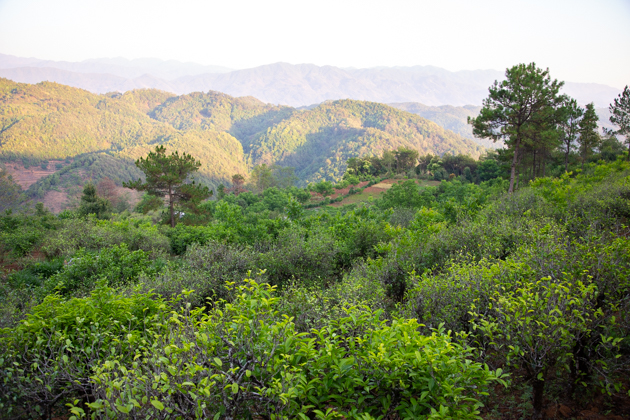
However, applying fertilizer can cause a sudden increase in nitrogen levels in the tea trees, which can in turn lead to an increase in harmful microorganisms, mites, and insects. Microbes and insects are attracted to nitrogen and thrive in environments rich in this nutrient, so applying fertilizer can sometimes cause the tea trees to die suddenly due to infestations.
Sudden death of old tea trees is not unique to Yunnan province and has also been observed in tea plantations in other regions, such as the Wudong Mountain in the Phoenix tea-growing region.
The essence of traditional farming in Yunnan province
The reason why tea farmers in Yunnan province adhered to traditional cultivation methods was actually to maintain the health of the tea. By growing tea in a natural state, tea trees naturally absorb the necessary nutrients and maintain a healthy state. In addition, the use of fertilizer-free farming methods reduces the nitrogen concentration in tea trees, which eliminates the risk of pathogenic infection and pest damage, while also affecting the taste of the tea. Since the components contained in the tea leaves change, naturally cultivated tea has a richer and deeper taste without any chemical taste or aroma.
Related Articles
How to get the latest update on HOJO Tea?
1. Follow Twitter, 2. Click "Like" on Facebook, and 3. Subscribe in newsletter. You can have the latest tea news from HOJO Tea.
 Subscribe the Newsletter to enjoy the privileges
Subscribe the Newsletter to enjoy the privileges- You may receive a free sample upon purchase, or you may have the priority to purchase special products. So please remember to subscribe our newsletter as well as the social network.
- Yunnan Chun Jian Green Tea from High Mountain Gardens
- Yunnan Chun Jian Green Tea is now available.This tea is made from naturally grown leaves harvested from high mountain gardens at 2100m above sea level. It has a rich, long-lasting lingering aftertaste, comparable to raw Pu-erh tea. Yunnan as a Distinctive Tea Growing Region Over the past 20 years, we have explored a wide range …
- Limited Loose Leaf Release of 2025 Da Xue Shan Wild Raw Pu-erh Tea
- We have released the 2025 loose-leaf version of Da Xue Shan Wild Raw Pu-erh Tea.This tea comes from wild tea trees that grow naturally in the high mountains of Yunnan Province, at elevations above 2000 meters. This year, we were only able to secure a small quantity for retail, and the current release is available …
NEW ARTICLES
 Yunnan Chun Jian Green Tea from High Mountain Gardens
Yunnan Chun Jian Green Tea from High Mountain Gardens- Yunnan Chun Jian Green Tea is now available.This tea is made from naturally grown leaves harvested from high mountain gardens at 2100m above sea level. It has a rich, long-lasting lingering aftertaste, comparable to raw Pu-erh tea. Yunnan as a Distinctive Tea Growing Region Over the past 20 years, we have explored a wide range …
 Limited Loose Leaf Release of 2025 Da Xue Shan Wild Raw Pu-erh Tea
Limited Loose Leaf Release of 2025 Da Xue Shan Wild Raw Pu-erh Tea- We have released the 2025 loose-leaf version of Da Xue Shan Wild Raw Pu-erh Tea.This tea comes from wild tea trees that grow naturally in the high mountains of Yunnan Province, at elevations above 2000 meters. This year, we were only able to secure a small quantity for retail, and the current release is available …
 2025 Da Xue Shan Wild White Tea Now Available from Yunnan
2025 Da Xue Shan Wild White Tea Now Available from Yunnan- The 2025 harvest of Da Xue Shan Wild White Tea is now available. Crafted from truly wild Camellia taliensis trees growing naturally in the high-altitude forests of Yunnan, this tea offers a purity and character unique to its origin. This year’s unusually dry climate during the withering season was ideal, resulting in a floral and …
 Why Do Some Teas Taste Astringent? Exploring the Causes and Mechanisms of Astringency
Why Do Some Teas Taste Astringent? Exploring the Causes and Mechanisms of Astringency- Tea can range from having no noticeable astringency to possessing a very strong one. What causes this astringency? This article explores the causes and mechanisms behind astringency in tea. Causes of Astringency Astringency arises from the binding of tea components to proteins in the oral cavity, creating a sensation of tightness or dryness. The tongue …
 The Impact of Heat Sources on Tea Flavor
The Impact of Heat Sources on Tea Flavor- It is widely recognized that the material of a kettle plays an important role in shaping the taste of water for brewing tea. Yet, an often overlooked but equally significant factor is the type of heat source used to boil the water. Different heat sources, whether gas, electric, charcoal, or wood fire, can impart distinct …
 New Release of High Mountain White Tea
New Release of High Mountain White Tea- We are pleased to introduce our High Mountain White Tea, sourced from a unique tea garden with two key features: 1. Located at an altitude of 2200-2300m2. Completely wild and untended The ideal natural conditions of this garden result in tea of exceptional quality, offering a pure and gentle, nourishing taste. High Altitude and Wild …
 New Release of Da Xue Shan Wild White Tea 2024
New Release of Da Xue Shan Wild White Tea 2024- We have released the 2024 Da Xue Shan Wild White Tea Loose Leaf. This tea was produced under our direct supervision during our stay in Yunnan Province, ensuring meticulous production management on site. Definition of Wild Tea in Yunnan Province People in Yunnan strongly associate Camellia taliensis with wild tea, regardless of where it is …
 New Release of Wild Pu-erh Jasmine Pearl
New Release of Wild Pu-erh Jasmine Pearl- Out of curiosity, we decided to create a jasmine tea based on Da Xue Shan Wild Raw Tea. This resulted in an exceptionally rare tea, not only in Japan but also in China. Custom Production Network for Jasmine Tea At our store, we source various types of base teas from different regions during the spring. …
 2024 Overview: Our Yunnan White Tea Quality, Process, and Weather Insights
2024 Overview: Our Yunnan White Tea Quality, Process, and Weather Insights- One of the teas we’ve been focusing on in Yunnan Province is white tea. Historically white tea has been produced in both Fujian Province and Yunnan Province for a long time. While white tea from Fujian Province is well-managed during processing, we are dissatisfied with the quality of the raw materials due to the use …
 Yunnan’s Hospitality Culture: Expressed Through Meals
Yunnan’s Hospitality Culture: Expressed Through Meals- In China, as a form of greeting, it’s common to say “你吃饭了吗?” which means “Have you eaten?” However, in Yunnan Province, the phrase “吃饭” is often used in various situations, more like “Eat, eat,” serving as an invitation to share a meal. Yet, with prolonged exposure to Yunnan, one comes to understand that these meal …
Shop Info

Address:Lot No. T-215, 3rd Floor, The Gardens Mall, Mid Valley City, Lingkaran Syed Putra, 59200 Kuala Lumpur
Tel: +603-2287-4537
Business Hour: 10am to 10pm
Category
- New Arrival at HOJO Online Shop
- Featured Articles
- Newsletter
- Types of Tea
- Origin of Tea
- Teapot and Tea Equipment
-
Tea Column
- How to enjoy tea
- Tea Processing
- How to choose quality tea
- Tea constituents and functional effect
- Safety of Tea
- Foods
- Tea Business Operation
- Hobby and Outdoor Activity
- Ranking of Tea
- Video
- FAQ
- Media Release
Profile

- AKIRA HOJO
- I invite you to experience my tea selections.I was born in Nagano, Japan. In university, I studied agricultural chemistry, and I have the master degree in food science. I worked in Japanese food industry for 10 years. I involved in R&D, QC and QA. As a factory manager, I implemented ISO9000 series and managed the factory.
- The Art of Tea Magazine
- We posted the article on “The Art of Tea Magazine No.9, the magazine is published in Taiwan. We featured some scientific view about the tetsubin
- New Straits Times
- The Malaysian National Newspaper, New Straits Times featured HOJO Tea on 17-Oct-2007.




